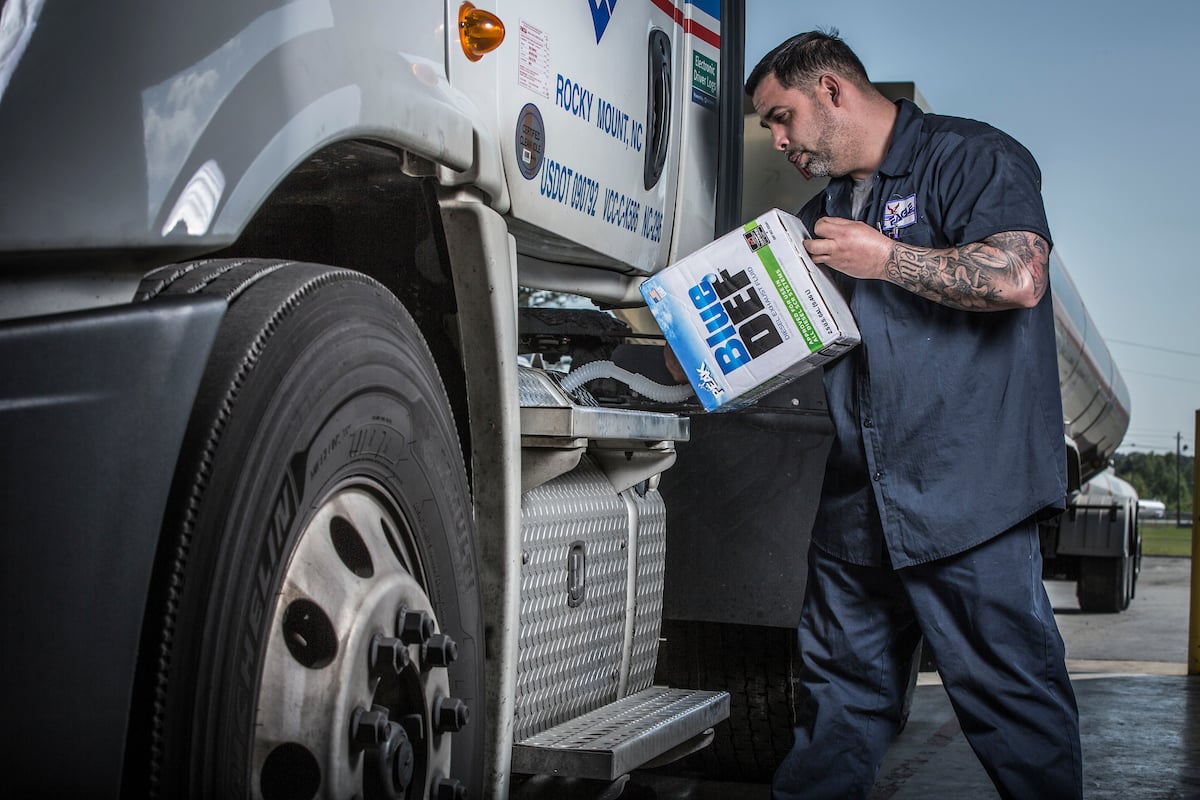
Understanding how SCR affects your bottom line
- September 13, 2017
Selective catalytic reduction (SCR) technology has seen a tremendous growth in popularity with fleet professionals over the past six years, both for its ability to comply with Environmental Protection Agency (EPA) regulations and for the financial and performance benefits it provides to fleets.
SCR is an after-treatment emissions control technology that requires the addition of a urea based diesel exhaust fluid (DEF) through a SCR Catalyst, significantly reducing NOx emissions. While fleet operations nationwide are required to adopt some new technology to comply with government regulations, it is important that fleet professionals understand the implications SCR and DEF have for their fleet — and ultimately how this new technology will affect their organization’s bottom line.
Benefits of SCR Technology
Regulatory compliance
Over the past 10 years, EPA emission standards have been tightened to require original equipment manufacturers (OEM’s) to meet regulatory guidelines that drastically reduce NOx emissions. The majority of OEM’s have opted to utilize SCR technology to adhere to these standards and avoid steep fines. Advanced exhaust gas recirculation (EGR) systems are also an option that has been identified to curb emissions, but this technology has not proved as successful for reasons explained below.
Reduced maintenance costs
According to Charles Culverhouse, global DEF general manager at Old World Industries, parent company of PEAK Commercial & Industrial, SCR is a much better technology than what was utilized in older systems, such as EGR. EGR technology, which has now been abandoned by many OE’s for SCR systems, takes some of the vehicle’s exhaust gas and adds it back into the intake air to reduce the amount of NOx that is formed. This process, which requires carbon that is abrasive and hard on the internal components of the engine, reduces overall engine efficiencies and requires exceedingly high maintenance — utilizing SCR instead is much simpler overall, results in shorter oil change intervals and overall lower maintenance costs.
Fuel savings
While it was designed to reduce NOx and particulate matter, one of the most beneficial characteristics of SCR technology is the true savings that can be achieved with regards to a fleet’s diesel spend. With diesel as the largest cost for fleets, this reduction can equate to significant cost savings. Engines equipped with SCR technology usually experience a 3-5% fuel efficiency improvement. While fuel savings from SCR, which are detailed below, will vary depending on the current price of diesel, lowering costs is always a key tool for fleet owners looking to maximize their operation’s performance.
Breaking it down: How fleets save with SCR
If a fleet owner has 10 trucks averaging 100,000 miles per year, he or she will be managing vehicles that travel approximately one million miles per year. At an average of 6.5 miles per gallon (MPG will vary depending on the vehicle), each vehicle consumes more than 16,000 gallons of diesel fuel per year — 160,000 gallons of diesel for the entire fleet. If a vehicle experiences a 5% increase in fuel efficiency, the fleet owner will experience approximately $25,000 in fuel savings across the board.
However, critics of SCR often cite the cost of DEF as an obstruction to a fleet’s profitability. While this cost must be factored in to evaluate net profits, it will undoubtedly result in significant costs savings for the fleet. For the particular arrangement outlined above, DEF would cost the fleet about $7,500 each year. This would net $17,500 in savings each year as a result of utilizing SCR technology for just 10 vehicles.
Once a fleet operation has rotated an entire fleet to SCR technology, fleet owners can save hundreds of thousands, even millions, of dollars each year as a result of utilizing SCR technology — and cleaning the environment at the same time.
Utilizing SCR to lower overall operational costs
To keep an SCR system running at its peak performance, Culverhouse cautions fleet professionals to use only pure, high-quality DEF at every refill. PEAK Commercial & Industrial’s BlueDEF conducts batch testing with every blend to assure the product’s quality and give fleet managers and drivers peace of mind that their engines are prepared to perform at peak levels.
In addition, fleet professionals should also maintain proper DEF levels to ensure proper engine function, maintain proper storage and dispensing equipment, and change the DEF filter every 200,000 miles or 6,500 operating hours.
The assimilation of SCR systems into a fleet lineup can benefit an organization in a number of ways, including the assurance of regulatory compliance, reduced maintenance costs and significant fuel savings.

